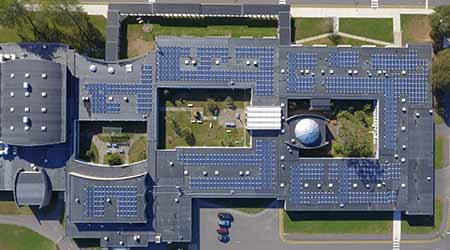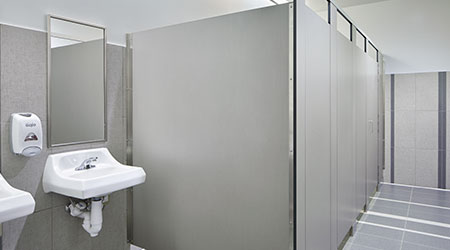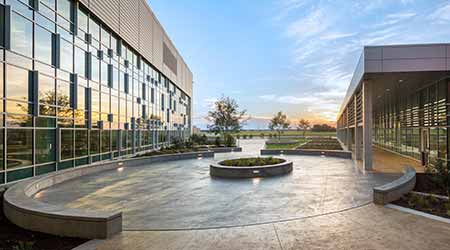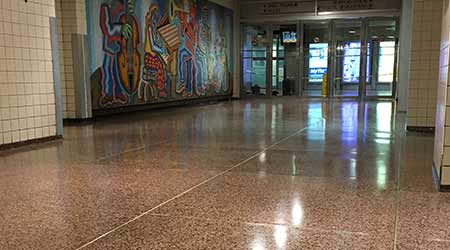view all Case Studies
Trumbull Public School District Reduces Utility Spending by $864,000

The installation of four photovoltaic arrays reduced Trumbull Public Schools energy spending by approximately $110,000 annually.
January 7, 2019 -
Software
When Mark Deming came on as facilities director for Trumbull Public Schools, he wasn’t joining a team that was unfamiliar with how effective proper software can be. His predecessor was already using Dude Solutions’ software to track maintenance work, but when it came to energy management, Deming saw an alarming problem early on. For a roughly one million-square-foot district, they were spending an average of $2.3 million on their overall energy program (factoring in the cost of purchased power, upgrades, incentives, etc.), nearly twice as much as to be expected for a district of that size in the area.
The district, located in Trumbull, Conn., has more than 7,000 students, with one high school, two middle schools, one agri-science school, five elementary schools and one early childhood education center.
Deming knew that the problem was beyond a few upgrades — the district would need major changes to cut spending. To start, Deming needed to be able to see the full picture of what they were currently doing to rack up these costs, so he implemented Dude Solutions’ energy management software. With the facts in front of him, he had a good idea of what needed to be done (prioritize projects for energy-bleeding buildings, begin retrocommissioning projects, utilize solar arrays), but he was well aware he’d need data to justify his case and get things moving.
“The focus was: How do we get these buildings in line with what the norm should be? We identified 60-year-old boilers, inefficient lighting systems, old pneumatic controls,” Deming says. “So I determined where the most savings could be ... and started targeting them in that order.”
Trumbull Public Schools district has seen changes in its energy usage and spending that are beyond noteworthy — in less than four years they cut their utility spending roughly in half, reducing costs by $864,000. They’ve also received $1.2 million in utility incentives.
Working in order of priority, Deming and his team completed:
• Nine boiler rooms retrofitted with new boilers, pumps, etc.
• 850K square feet of schools retrofitted with LED lighting.
• Seven new DDC building management systems installed.
• Three buildings underwent retrocommissioning programs.
• Four photovoltaic arrays installed, saving approximately $110,000 annually.
• New roof installed on middle school.
All projects are being paid for by energy savings gained over less than 10 years Though they still have several more projects to complete to get them to their goal, how far they’ve come is impressive.
Deming and his department have plans for more energy projects over the coming years that will push them to their ultimate goal, and he says they’re hoping to start a preventive maintenance program as well. Though the changes they’ve seen are the result of many people’s hard work and patience, he notes that the role proper software plays is integral for seeing your data story and getting buy-in on making the investment.
“I would tell anyone who’s not tracking their energy consumption that they’re missing a big, expensive boat,” he says. “You need something to verify that the work you’re doing is accomplishing what you wanted to accomplish. Now going forward, I’m able to pull reports, I’m able to project budgets to the end of the year, so it just gives me the tools I need to do what I need to do.”
Next
Read next on FacilitiesNet












